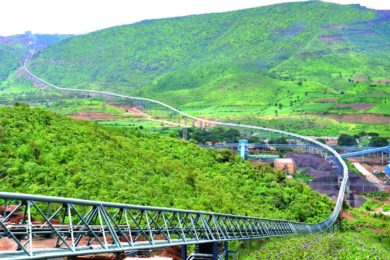Gavin Halse, Managing Director of South Africa’s ApplyIT says the “medium-term outlook for the world’s mining sector remains positive. Global demand for resources driven from the emerging economies has over the past 12 months led to unprecedented levels of investment in certain regions, notably in Australia. These new projects are placing a strain on resources as companies compete for scarce skills and expertise in the labour markets. Mining companies are increasingly looking to technology solutions to standardise processes and to help manage increasing complexity, in this regard the sector is no different from any other global operation. It should come as no surprise that the information technology challenges experienced by mining companies have much in common with companies in other sectors such as petrochemicals, energy and process manufacturing. However, there are unique and specialised aspects of mining that do not necessarily apply to these other sectors. These include the fixed location of raw materials, finite tenement resources, asset and energy intensive plants, inherently hazardous operations, relatively small volumes of very high value products (eg, gold and platinum) and large volumes of relatively low value commodity products (eg, iron ore and coal).
“Efficiencies and improved business processes can in general be realised by adopting a single global ERP system with standardised business processes. Many mining companies are actively busy consolidating their business systems to standardise processes in this way, and the emphasis is usually on financial, HR and logistics management. However, as is the case in other sectors, unified business systems are not necessarily particularly effective at improving operational efficiencies in the mines themselves, where plant managers are daily faced with the challenges of managing people and processes with variable raw materials, real world stoppages, delays and breakdowns. Furthermore, these local operations are often taking place in operations scattered in different countries, with vastly different skilled labour pools, environmental and energy conditions. A two-tiered technology approach is therefore necessary, whereby global business systems are implemented at the one level, and localised operational systems are implemented at another. Where local systems are implemented, minimum standards representing best practice can be used to ensure that the local implementation is in line with corporate practices in other territories, mines or plants. In practice, IT in mining is characterised by some standardised business systems aligned to best practice, consolidated to some degree or other and complemented by best-in-class operational management systems that are selected with local considerations in mind. This two-tier complexity requires an appropriate systems architecture that encompasses IT infrastructure, applications, integration, scalability and support. It is feasible that a large mining company already has its infrastructure and certain applications hosted as a service, in this way this company may be well positioned to consider and exploit future cloud-based solutions. However, at the other end of the scale, equipment and process control, safety and production management systems need to be very close to the specifics of the operations and will usually be delivered on-premise by specialised solution providers.
“IT managers in mining companies therefore need to form strategic relationships with software suppliers at both levels of their IT systems. The mining industry is not afraid to innovate and – when this innovation is done in conjunction with suppliers who can embed these ideas in new systems functionality – the result can be an impressive improvement in efficiency, asset utilisation and safety performance. When there is a lack of a strategic engagement between the mine and software suppliers, performance will suffer by virtue of operations being shoehorned into standard practices that may be appropriate for another operation in another country, but not for the local specifics. Standard commercial processes may be implemented in areas such as purchasing, inventory, financial accounting and so on. However, when considering mining operations, system flexibility is the most significant element to consider. For example, in the area of safety, while the underlying principles are prescribed globally, detailed safety practices can differ significantly between plants. When the local detail is ignored and attempts are made to implement generic safety systems, unsafe practices can result. Centrally deployed safety systems in mines need to be able to accommodate the nuances between plants in different countries in a flexible way without compromising the underlying integrity of the processes in the individual plants. In the same way, execution of operational processes such as shift work, standing instructions, incident management and more will all differ slightly between plants, and certainly between countries, to accommodate cultural and other local factors.
“Management of complexity is a universal and essential competence of IT managers. The natural tendency to simplify matters by adopting a single, all-embracing integrated system will only work in certain situations. The reality is that mining operations are complex and localised in nature and the implementation of global standards will differ from plant to plant. IT Managers therefore need to recognise this limitation and select systems suppliers that understand the importance of flexibility in their solutions and with whom they can form strategic relationships to bring innovative ideas to fruition.








